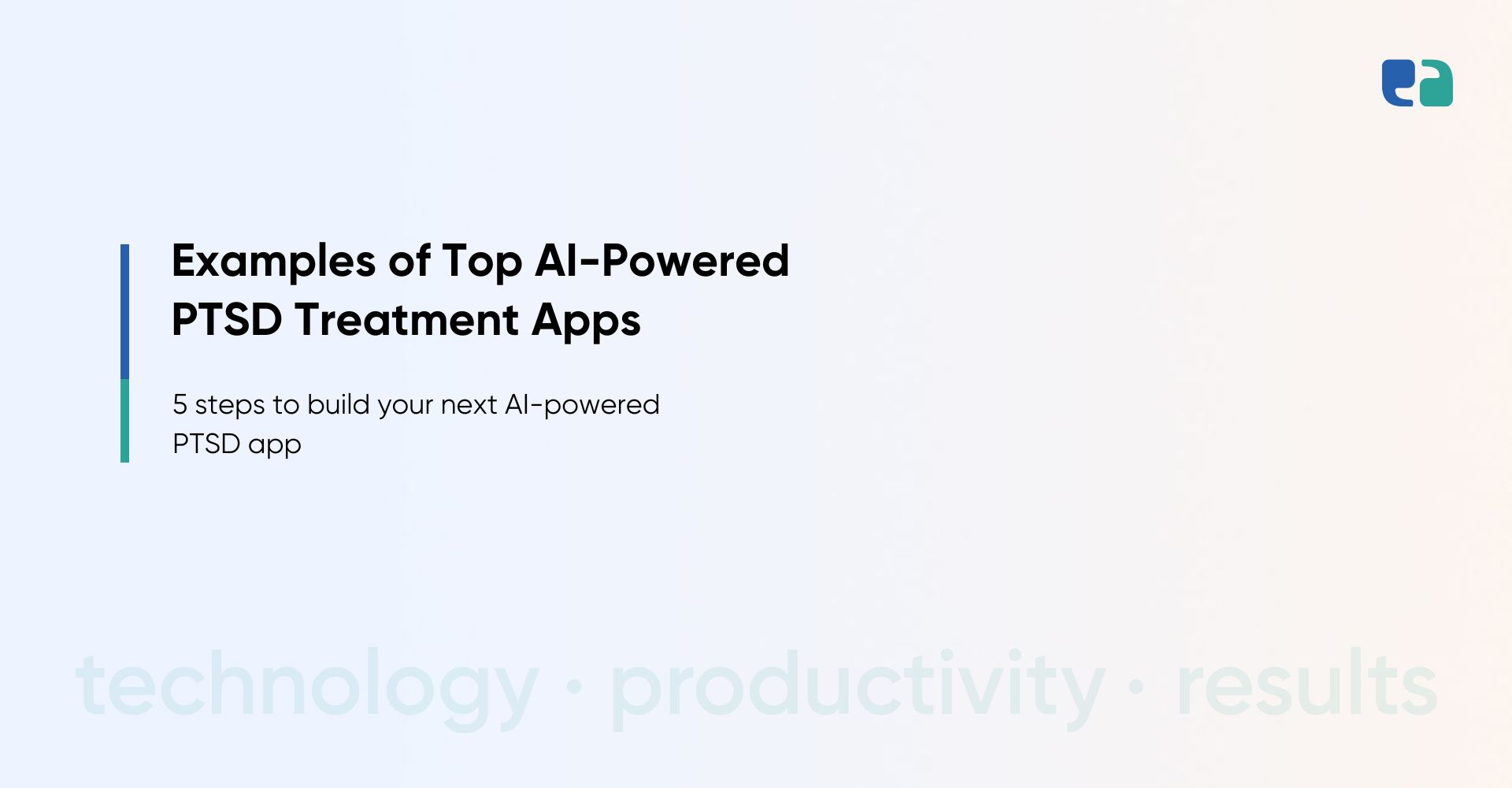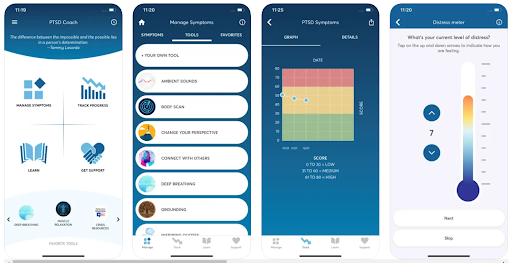PTSD is a mental health condition that affects millions of people worldwide.
According to the Adult Psychiatric Morbidity Survey of Mental Health and Wellbeing in England, around 3.7% of men and 5.1% of women were found to have PTSD symptoms.
It can develop after experiencing trauma and often leads to symptoms like anxiety, panic attacks, and intrusive thoughts.
Unfortunately, many people, especially in underserved areas like war zones or refugee camps, lack access to proper treatment.
This is where AI-powered platforms come in.
By using AI, we can offer personalized PTSD treatment, designed to match each person’s unique symptoms.
These digital solutions can also provide 24/7 support, ensuring continuous care when needed.
And because they can be delivered through mobile apps, they have the potential to reach people who may not have access to traditional therapy.
In this guide, we’ll explore how to build an effective AI-powered application for PTSD treatment.
Understanding PTSD: Symptoms, Diagnosis, and Challenges
Traditional PTSD Treatments
Here are some traditional approaches for treating PTSD:
- Cognitive Behavioral Therapy (CBT): It focuses on changing negative thought patterns. Techniques include exposure therapy and cognitive restructuring.
- Medication: Antidepressants and anti-anxiety medications can help manage symptoms like depression, anxiety, and sleep problems.
- Support groups: These offer community and validation, allowing people to share their experiences with others who understand their struggles.
How AI Can Revolutionize PTSD Treatment
5 Steps to Build an AI-Powered PTSD Treatment Platform
1. Define Your Goals and Target Audience
Clearly outline the specific needs and challenges of your target population, whether it’s veterans, survivors of trauma, or individuals with specific PTSD subtypes.
2. Gather and Prepare Data
Collect relevant data, including patient demographics, clinical assessments, treatment history, and symptom tracking. Ensure data privacy and security.
3. Choose AI Technologies
Select appropriate AI technologies, such as machine learning, natural language processing, and virtual reality, based on your goals and the type of treatment you want to provide.
4. Develop AI Models
Train and validate AI models to accurately predict symptoms, identify triggers, and recommend personalized treatment strategies.
5. Design the Platform Interface
Create an intuitive and user-friendly platform interface that is accessible to patients of all ages and technical abilities.
6. Integrate with Existing Healthcare Systems
Ensure seamless integration with electronic health records (EHRs) and other healthcare systems to facilitate data sharing and coordination of care.
High-quality Data is the Foundation of Any Successful AI Model Development for PTSD Platform
Various data sources can be used to train your AI model:
- Self-reported data: Questionnaires and surveys can collect information about an individual’s symptoms, experiences, and behaviors.
- Clinical records: Electronic health records can provide valuable data on diagnosis, treatment history, and medication use.
- Physiological data: Physiological data such as fMRI scans can offer insights into brain activity and potential biomarkers for PTSD.
- Audio, visual, and textual data: AI can analyze data from sources like voice recordings, videos, and text messages to detect patterns related to PTSD symptoms.
Raw data needs to be cleaned and prepared for AI model training. This involves:
- Handling missing data: Imputing missing values using appropriate techniques.
- Dealing with imbalanced datasets: Techniques like oversampling or undersampling can be used to address class imbalance, where one group (e.g., PTSD patients) is significantly smaller than the other.
- Ensuring data privacy and security: Data must be de-identified, encrypted, and stored securely to protect user privacy and comply with relevant regulations.
Choosing the Right AI Model
The choice of AI model depends on the data you have, your resources, and the desired outcomes of your platform.
Training and Evaluating Your Chosen AI Model
Model training involves feeding the AI algorithm with labeled data (e.g., data where you already know if a person has PTSD or not) and adjusting the model’s parameters until it can accurately predict the outcome for new, unseen data.
Several metrics are used to evaluate the performance of an AI model for PTSD diagnosis or prediction:
- Accuracy: The percentage of correctly classified instances.
- Precision: The proportion of positive predictions that were actually correct.
- Recall: The proportion of actual positive cases that were correctly identified.
- F1 score: A harmonic mean of precision and recall.






